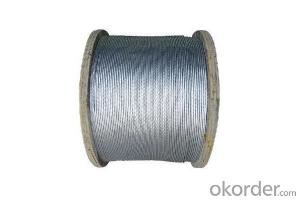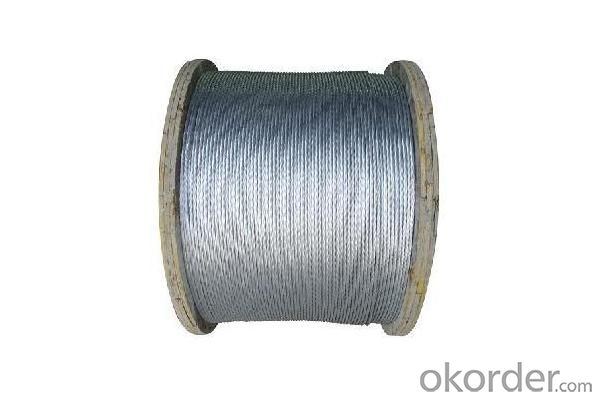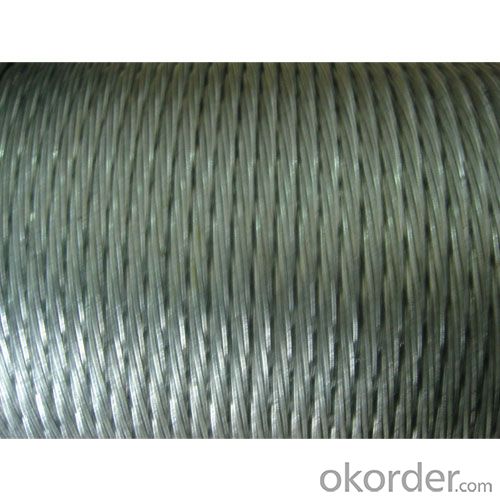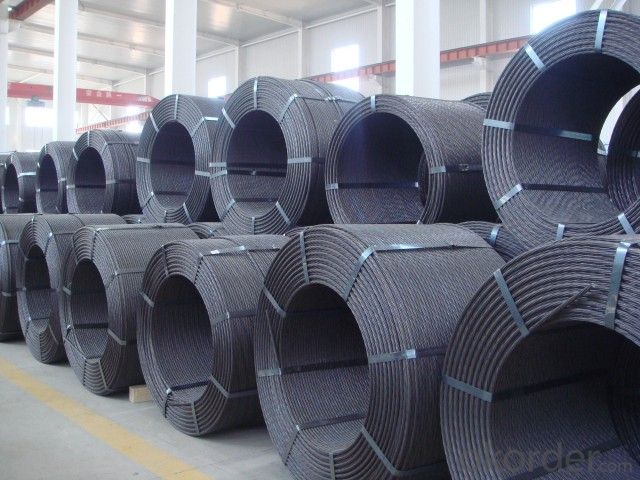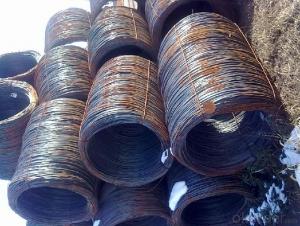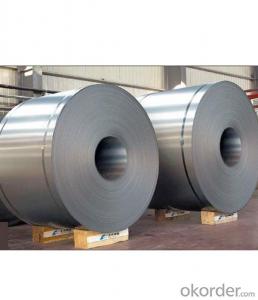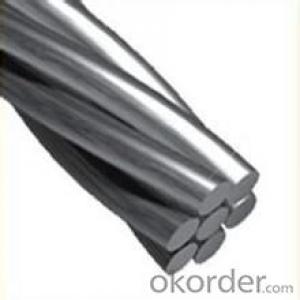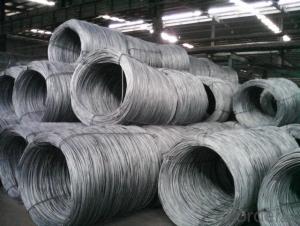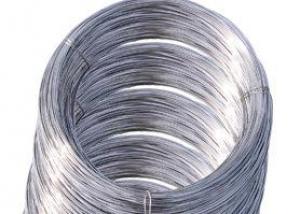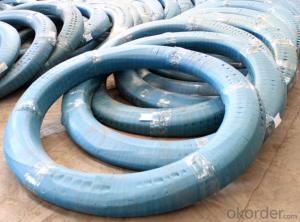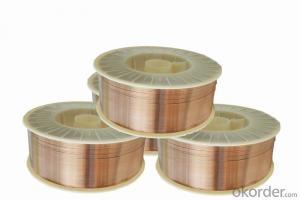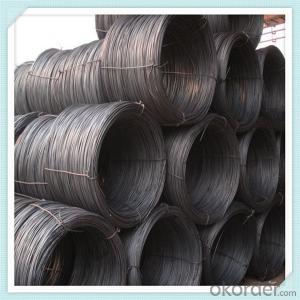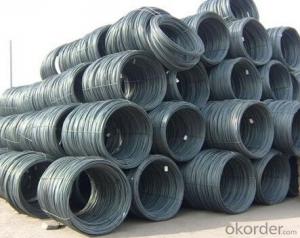Wholesale Products China inner wedges for 0.6" pc strand
- Loading Port:
- Tianjin
- Payment Terms:
- TT OR LC
- Min Order Qty:
- 50 m.t.
- Supply Capability:
- 50000 m.t./month
OKorder Service Pledge
OKorder Financial Service
You Might Also Like
Quick Details
Steel Grade: High carton steel wire 82B
Standard: BS
Wire Gauge: 1*7 - 15.2mm
Place of Origin: Tianjin, China (Mainland)
Type: Drawn Wire
Application: Construction
Alloy Or Not: Non-alloy
Special Use: Cold Heading Steel
Model Number: 1*7-15.2mm
- Commodity: Prestressed Concrete Steel Strand
Strand diameter: 15.2mm
Steel area: 143.4㎡
Unit mass: 1126kg/km
Lay Direction: Left
low relaxation: 3.5%1000h
at Yield strength (1%Ex): 234.6KN
Breaking strength: 260.7KN
Elongation in(Lo>24''/610m: 5.0
Modulus of elasticity: 199
Packaging & Delivery
| Packaging Details: | Packing: In soft coils, water proof paper inner, white color hessian (or. P.P) cloth outer Coil Weight: around 2.500 kg or negotiation Cargo: to be stuffed in 25*20GP containers (No more than 25MTS / container) |
|---|---|
| Delivery Detail: | 20 days after confirm the order |
| Wholesale Products China inner wedges for 0.6" pc strand |
Product Pictures of inner wedges for 0.6" pc strand
- Q: How is the steel wire rod industry affected by fluctuations in raw material prices?
- The steel wire rod industry is significantly affected by fluctuations in raw material prices. Raw materials, such as iron ore, coal, and scrap metal, are essential for the production of steel wire rods. Any changes in the prices of these raw materials can have a direct impact on the cost of production for steel wire rod manufacturers. When raw material prices increase, it directly increases the input costs for steel wire rod production. This puts pressure on manufacturers to either absorb the higher costs, which can lead to reduced profit margins, or pass on the increased costs to customers through higher prices. In either case, it can impact the competitiveness of steel wire rod manufacturers in the market. On the other hand, when raw material prices decrease, it can provide some relief to steel wire rod manufacturers as it reduces their production costs. This can enable manufacturers to offer lower prices or maintain their profit margins while remaining competitive in the market. Fluctuations in raw material prices also affect the supply chain of the steel wire rod industry. Manufacturers rely on a steady supply of raw materials, and any disruption or volatility in prices can impact their ability to procure sufficient quantities of raw materials. This can cause delays in production, lead to higher inventory costs, and affect the overall productivity of the industry. Additionally, fluctuations in raw material prices can also impact the profitability of steel wire rod manufacturers. If raw material prices increase significantly and manufacturers are unable to pass on the increased costs to customers, it can result in reduced profitability and potentially even financial losses. Conversely, when raw material prices decrease, manufacturers may experience improved profitability. In conclusion, fluctuations in raw material prices have a direct impact on the steel wire rod industry. It affects the cost of production, competitiveness, supply chain, and profitability of manufacturers. As a result, industry players closely monitor and analyze raw material price trends to make informed decisions and mitigate the impacts of price fluctuations.
- Q: What are the growth prospects for the steel wire rod market?
- The growth prospects for the steel wire rod market are promising due to increasing demand from various industries such as construction, automotive, and manufacturing. Additionally, the growing use of steel wire rods in infrastructure development projects and the rising trend of electric vehicles are expected to further drive market growth.
- Q: What are the trade regulations for steel wire rod?
- The trade regulations for steel wire rod can vary depending on the country or region. However, some common regulations include import duties, quotas, and quality standards. It is important for exporters and importers to research and understand the specific regulations enforced by the relevant authorities before engaging in trade activities involving steel wire rod.
- Q: What are the common disposal methods for steel wire rod?
- The common disposal methods for steel wire rod include recycling, repurposing, and proper waste management. Recycling involves melting down the wire rod to produce new steel products, reducing the need for raw materials. Repurposing involves using the wire rod for different applications, such as construction or art projects. Proper waste management involves disposing of the wire rod in designated facilities or recycling centers to prevent environmental harm.
- Q: How is steel wire rod used in the production of reinforcing bars?
- Steel wire rod is used in the production of reinforcing bars by being stretched and twisted into a spiral shape, known as ribbing. This ribbing provides enhanced strength and grip, allowing the reinforcing bars to effectively reinforce and strengthen concrete structures.
- Q: How is the diameter of a steel wire rod determined?
- The determination of the diameter of a steel wire rod is accomplished by means of wire gauge measurement. This procedure entails the utilization of a wire gauge apparatus, comprising a collection of notched plates featuring holes of different sizes. In order to ascertain the diameter of the steel wire rod, it is threaded through the holes of the wire gauge until it fits tightly within the hole, devoid of any voids or extra space. The hole into which the wire fits perfectly indicates its diameter. Wire gauges can be obtained in both standard and metric sizes, facilitating precise measurement of steel wire rods with varying diameters.
- Q: What are the main factors influencing the choice of steel wire rod customer service?
- There are several main factors that influence the choice of steel wire rod customer service. Firstly, the quality of the customer service provided plays a crucial role. Customers value prompt and efficient responses to their inquiries and concerns. If a steel wire rod company can offer quick and helpful assistance to customers, it enhances their overall experience and satisfaction. Secondly, the expertise and knowledge of the customer service representatives are important factors. Customers often have technical questions or require guidance on specific products or applications. Therefore, having well-trained and knowledgeable staff who can provide accurate information and guidance is highly valued by customers. Additionally, the availability and accessibility of customer service are significant considerations. Customers expect to have various channels to reach out for assistance, such as phone, email, or live chat. Having a responsive customer service team that is available during regular business hours or even around the clock is preferred by customers who may have urgent or time-sensitive needs. Furthermore, the responsiveness and effectiveness of issue resolution are key factors in customer service choice. Customers appreciate when their concerns or problems are addressed in a timely manner and resolved to their satisfaction. A steel wire rod company that can quickly and effectively address customer issues builds trust and loyalty. Lastly, the overall reputation and reliability of the steel wire rod company also influence the choice of customer service. Customers often rely on word-of-mouth recommendations or online reviews to assess the reputation of a company's customer service. If a company has a positive track record of providing excellent customer service, it increases the likelihood of customers choosing their products. In conclusion, the main factors influencing the choice of steel wire rod customer service include the quality of service, expertise of representatives, availability and accessibility, responsiveness and issue resolution, as well as the reputation and reliability of the company. By considering these factors, customers can make informed decisions about which steel wire rod company to choose based on the level of customer service they provide.
- Q: What are the common production processes for rutherfordium-coated steel wire rod?
- The common production processes for rutherfordium-coated steel wire rod involve several steps. Firstly, the steel wire rod is thoroughly cleaned to remove any impurities and contaminants. Then, it undergoes a process called hot-dipping, where it is immersed in a solution containing rutherfordium. This allows the rutherfordium to bond with the surface of the steel wire rod. After the hot-dipping process, the wire rod is carefully dried and cooled. Finally, it undergoes a quality control check to ensure that the rutherfordium coating is uniform and adheres well to the steel wire rod.
- Q: How does the magnetic properties of steel wire rod vary with different grades?
- The magnetic properties of steel wire rod vary with different grades due to the varying composition and microstructure of the steel. High carbon steel wire rods, for example, have a lower magnetic permeability and are less magnetic compared to low carbon steel wire rods. Additionally, the presence of alloying elements such as nickel or chromium can affect the magnetic properties. In general, the higher the carbon content and the more alloying elements present, the lower the magnetic properties of the steel wire rod.
- Q: What are the different types of steel wire rod surface finishing processes?
- There are several different types of steel wire rod surface finishing processes, including pickling, phosphating, galvanizing, and coating. Pickling involves removing impurities and scale from the surface of the wire rod using an acid solution. Phosphating applies a thin layer of phosphate coating to improve corrosion resistance. Galvanizing involves coating the wire rod with a layer of zinc to protect against rust and corrosion. Coating processes, such as powder coating or painting, apply a layer of protective material to enhance durability and aesthetics.
Send your message to us
Wholesale Products China inner wedges for 0.6" pc strand
- Loading Port:
- Tianjin
- Payment Terms:
- TT OR LC
- Min Order Qty:
- 50 m.t.
- Supply Capability:
- 50000 m.t./month
OKorder Service Pledge
OKorder Financial Service
Similar products
Hot products
Hot Searches
Related keywords
